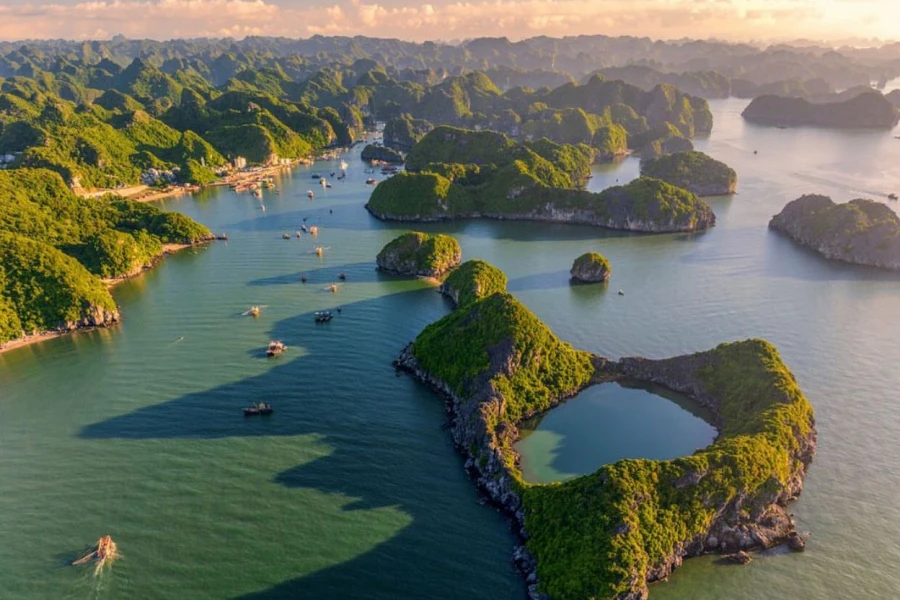
Let's have fun…
The extended visa policy, which increased the duration of electronic visas (e-visas) for tourists from 30 to 90 days, is seen as a positive step for Vietnamese tourism. However, when compared to other countries in the region, such as Thailand, Singapore, and Malaysia, Vietnam is considered to have an inferior visa policy. These countries offer more attractive and comprehensive tourism products, which are key factors in attracting travelers.
Although Vietnam exceeded its initial target by welcoming 8.9 million tourists by the end of the third quarter, it set a relatively low goal of 8 million visitors, which was the lowest among the top five Southeast Asian countries with the lowest recovery rates. In contrast, other countries in the region have set higher targets for international visitor arrivals. Thailand initially aimed to welcome 25 million visitors but later adjusted it to 30 million, while Malaysia, Singapore, and Indonesia have also set higher goals.
The key challenge facing Vietnam's tourism industry is the lack of unique and attractive tourism products and services. While the country boasts rich natural resources and unique heritage, it has not effectively transformed these resources into compelling tourism offerings. Tourists often visit Vietnam once and do not return due to the lack of memorable experiences.
Furthermore, Vietnam lacks shopping destinations, nightlife, entertainment tourism products, and dining destinations. Tourist spending remains limited due to the absence of high-quality shopping centers and attractive tourism products.
Another challenge is the limited budget for tourism promotion and marketing when compared to major competitors like Thailand. Vietnam also lacks overseas tourism promotion offices, whereas countries like Thailand, Malaysia, Singapore, and South Korea have established a significant global presence.
To address these issues, Vietnam's Ministry of Culture, Sports, and Tourism is considering public-private cooperation and leveraging private sector resources to establish tourism promotion offices in key markets. Developing unique and attractive tourism products and effectively promoting them is essential for Vietnam's tourism industry to compete effectively in the regional landscape.
Enhanced Products and Services Needed
Vietnam's tourism industry faces the challenge of offering unique and attractive products and services to meet the expectations of international travelers. While the country boasts rich natural resources and unique cultural heritage, it has not yet effectively converted these assets into compelling tourism offerings. The lack of such products and services remains a key issue for the country's tourism sector.
The absence of attractive tourism products and services is a recurring weakness in the Vietnamese tourism industry. Despite its abundant resources and natural beauty, Vietnam has yet to create a tourism product that resonates with its target market. It is not enough to rely solely on the nation's resources; they need to be transformed into memorable and exciting experiences for tourists.
Mr. Phan Đình Huê, Director of Vietcircle Tourism Company, noted that while Vietnam has plentiful natural resources and a central location in Southeast Asia, it lacks a comprehensive set of products and services. This deficiency includes entertainment and nightlife options, shopping destinations, and dining venues that cater to tourists' preferences. Many foreign tourists visit Vietnam once but do not return, as the country lacks the highlights and attractions that would make them want to come back.
The lack of shopping destinations is one notable issue, even in major tourist and economic hubs like Ho Chi Minh City. Vietnam has yet to establish sufficient shopping centers for tourists. Additionally, the development of night tourism products in many regions tends to follow a standard model of walking streets, food streets, and some cultural and entertainment activities. These activities, however, do not typically last until midnight, leaving tourists searching for answers to the question of what to do and where to shop during their visits.
The limited availability of shopping centers and nightlife options leads to restricted tourist spending in Vietnam. Consequently, the country struggles to implement a low-priced tour policy to attract travelers and compensate for this limitation with sightseeing and shopping tours, which are commonly used in other countries to enhance visitors' experiences.
Challenges in Promotion
Vietnam's tourism sector has been slow to progress in terms of promotion, primarily due to budget limitations when compared to regional rivals like Thailand. While Vietnam cannot match Thailand's substantial budget for communication and promotion, it can still make effective and efficient use of available resources. The key is to establish a clear vision and strategy and develop specific plans that maximize spending to achieve the best possible results.
One significant issue hindering Vietnam's tourism promotion is the lack of overseas tourism promotion offices. While Vietnam has recently opened three tourism representative offices abroad (in Japan, Korea, and the UK), it falls far behind other nations in the region. For instance, Thailand boasts 29 offices across Asia, Europe, and North America, while Malaysia, Singapore, and Korea each have a substantial number of tourism representative offices abroad. This lack of overseas presence puts Vietnam at a disadvantage when promoting its tourism industry on a global scale.
To address this challenge, the Ministry of Culture, Sports, and Tourism is considering public-private cooperation as a means to bolster tourism promotion. The ministry's decision to approve the Vietnam Tourism Marketing Strategy to 2030, issued on March 2, 2023, outlines plans to leverage resources from the private sector. This could involve establishing tourism promotion representatives through contract mechanisms, with support from embassies and trade offices in host countries. The ministry is also encouraging the Vietnam Tourism Association and core tourism businesses to establish tourism promotion offices in key markets.
Many in the tourism industry are eagerly awaiting the implementation of these initiatives to enhance the image of Vietnamese tourism and help the country compete more effectively with regional rivals. Developing a strong and efficient overseas promotion strategy and increasing the number of overseas tourism promotion offices will be vital steps in boosting Vietnam's tourism sector and attracting more international visitors.




















